Low product quality or considerable delays are usually due to flawed processes. Because of this, it’s critical for projects to have effective software development processes and reliable project management techniques. This is especially true in large projects with lots of complexity.
In this post, we’re going to deep dive into the Software Development Life Cycle (SDLC) process and some tried-and-true tips to help your team execute yours better.
What Is SDLC?
The SDLC process offers a clear framework for software delivery that enables development teams to build the best quality software at the lowest possible costs. The core aim of SDLC is to streamline the process of designing, developing, and delivering software.
SDLC encapsulates all 3 of what Maria Gutierrez, VP of Engineering at Twitter, calls the “pillars of sustainable engineering processes.”
Phases of SDLC
There are 7 distinct stages in the software development life cycle:
- Planning: Involves setting the high-level goals and outlining the scope and problems of existing projects.
- Analysis: This includes developing the initial concepts for prototypes and collecting all the necessary specifics for a new system. Typically, developers prepare a software requirement specification (SRS) document.
- Design: In the design phase, developers use the SRS document’s requirements as a starting point to create a detailed plan that they can take action on.
- Development: This step begins when the developer receives the design specification. During this phase, all software components will be implemented. Developers will create the source code based on the designs created in the previous stage.
- Testing: Software is rigorously tested before release, and any bugs detected are handed to the developers for resolution.
- Deployment: At this point, the new features are pushed into the production environment and become available to the end-users.
- Maintenance: During this phase, developers handle any issues that arise or implement necessary improvements.
SDLC Models and Methodologies
Like with technology itself, teams are constantly iterating on the processes they use to build technology. That’s why there are tons of SDLC models and methodologies. The following is a list of the most popular:
- Waterfall: In this model, once a phase is complete, the next one begins. There is a “waterfall” effect between stages, with each one feeding into the next.
- Agile: The Agile model involves a series of releases. The information gathered from testing each release is used to improve subsequent ones.
- Iterative: In the iterative model, an initial version is swiftly created and tested by developers before being improved upon in subsequent iterations.
- DevOps: Involves a strong collaboration between development and operations teams that helps to speed up innovation and rollout of better-quality software and features.
- Lean: When it comes to the Lean process, there is no place for multitasking because the focus is solely on the task at hand.
- Spiral: In the spiral model, planning, design, development, and testing repeatedly occur, with each iteration yielding incremental improvements.
SDLC Process Improvement
Data Integrity
Data integrity is an essential part of any successful SDLC. The data we’re talking about here is data about what a development team is working on and how this lines up with the strategic goals of the business.
Unfortunately, many engineering teams are facing a data integrity crisis. According to a recent report, 31% of WIP branches are unlinked in 75% of businesses. So, this means that there’s a high chance that the leaders have no idea what 31% of their team is working on.
LinearB can help you shore up your team’s data. We detect any work that has not been linked to an issue and surface it. With our WorkerB automation bot, developers can create tickets from right within Slack. This saves them time, prevents context switching, and ultimately results in less shadow work and better data integrity.
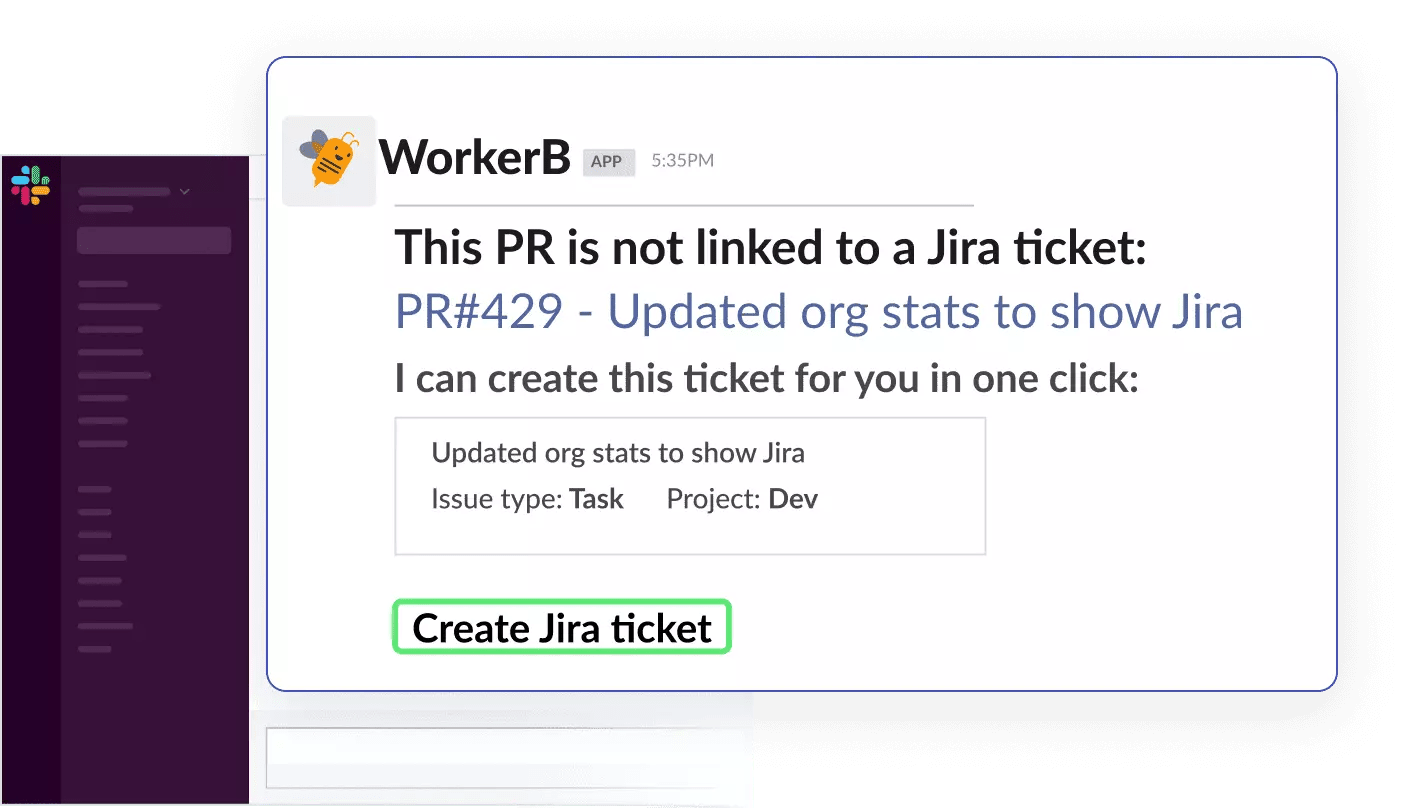
Pull Request Process
In the SDLC, PRs are a way for developers to notify other members of changes they’ve made to a repository branch. After opening a PR, team members can discuss and evaluate proposed improvements with collaborators and submit follow-up commits before incorporating modifications to the main branch.
However, the introduction of PRs implies that development teams now face a new barrier to merging or releasing their code. PRs often involve heaps of back-and-forth, which inserts slack time previously absent from the process.
One way to improve the PR process is to minimize PR size. It’s best to keep PRs small to ensure a thorough and speedy review.
In LinearB’s Engineering Benchmarks Study, we analyzed over 847,000 branches from over 1,900 teams and found that elite teams keep their PRs below 225 lines.
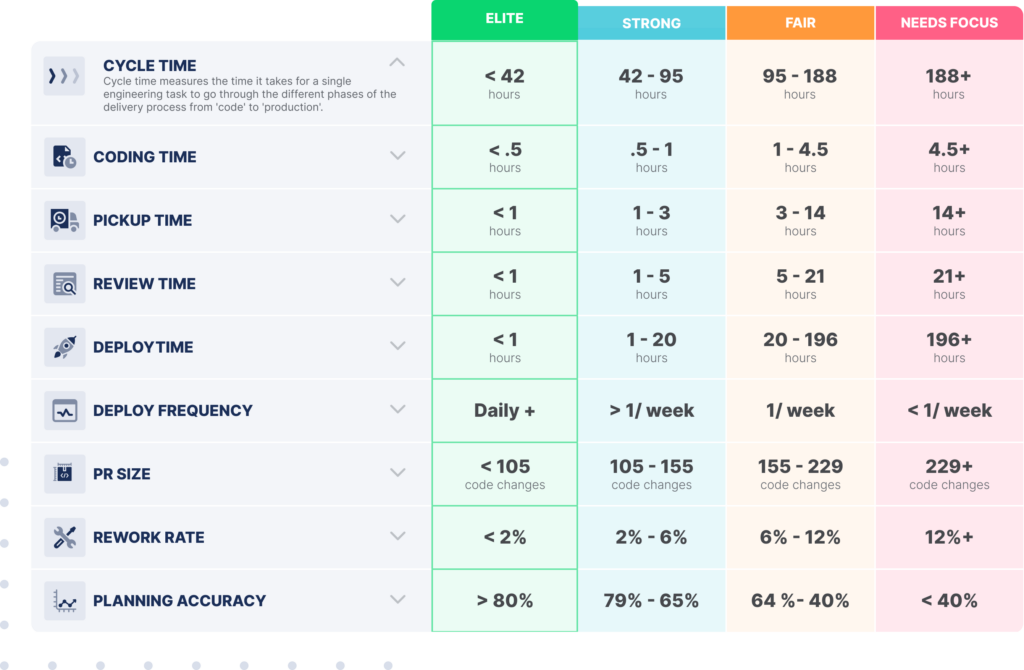 Want to learn more about being an elite engineering team? Check out this blog detailing our engineering benchmarks study and methodology.
Want to learn more about being an elite engineering team? Check out this blog detailing our engineering benchmarks study and methodology.
LinearB cannot only monitor the size of your PRs, but we also provide the tools that empower your team to drive down PR size. You can leverage the engineering benchmarks to set goals for improvement in our Team Goals system. Your developers can leverage WorkerB to receive alerts about when they create PRs that are larger than the goal the team has set, enabling them to course correct.
 Improve your code quality and developer workflow with smaller pull requests. Get started with your free-forever LinearB account today.
Improve your code quality and developer workflow with smaller pull requests. Get started with your free-forever LinearB account today.
Code Quality
How will you ensure that your code is of the highest quality? That’s what the testing stage is for. You may not mind shortening the testing phase to free up more time for other tasks. (If that’s a problem you should invest in automated testing). But eliminating testing will backfire. By testing, you ensure that your team releases high-quality software which will help you go faster in the long term.
A well-written piece of code accomplishes its intended purpose, contains no bugs, and conforms to clean code principles, best practices for the particular programming language, and the company’s coding guidelines. The code should also be thoroughly documented and tested.
With LinearB, you can track key indicators of code quality, like the two from the DORA metrics system: Change Failure Rate (CFR) and Mean Time to Restore (MTTR). But these are lagging indicators, so they don’t reveal why code quality is low. For that, you need leading indicators like review depth, PRs merged without review, and code churn, all of which are available in LinearB.
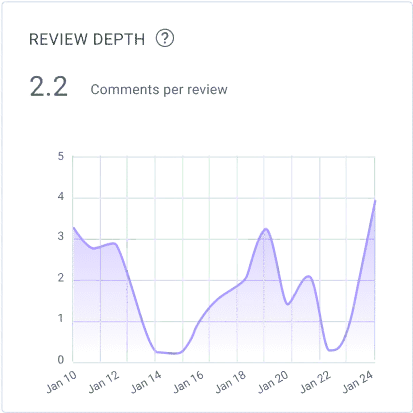
Engineering Efficiency
How quickly can my team ship features? This question is always on engineering leaders’ minds.
The best way to measure this is cycle time. Cycle time is a super-metric because it reflects how well your team is performing on so many other metrics. But this also poses a problem. With so many factors feeding into cycle time, how do you know how you can speed it up?
To answer that, you need more granular data. In LinearB, not only do we break down cycle time into the 4 sub-phases, we also track the cycle times of individual issues. With one click, you can spot the specific issues that are blocking your development pipelines.
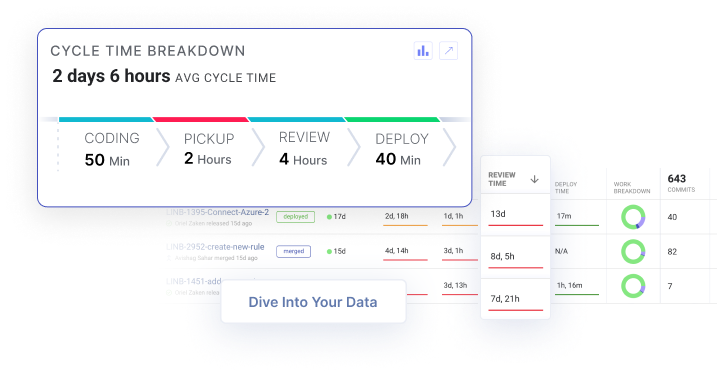 Get context around cycle time bottlenecks in one click. Diving into your data has never been this easy. Get started with our free-forever account today!
Get context around cycle time bottlenecks in one click. Diving into your data has never been this easy. Get started with our free-forever account today!
Planning Accuracy
A key goal of any SDLC system is to make it possible to ship new features by a predetermined release date. This enables the whole company to sync up. Timelines for product development can be established, marketing campaigns can be planned, and customer expectations can be met.
Unfortunately, the planning accuracy in the industry is less than 50% on average. In other words, engineering managers and team leaders are more likely to be mistaken than correct.
LinearB’s Project Delivery Tracker enables you to plan more accurately. You can see your planning accuracy over time, which enables you to see whether you’re systemically mis-planning and whether your efforts to improve are working. The Investment Profile metrics enable you to see exactly where your team is investing their time, allowing you to determine why you’re off-pace.
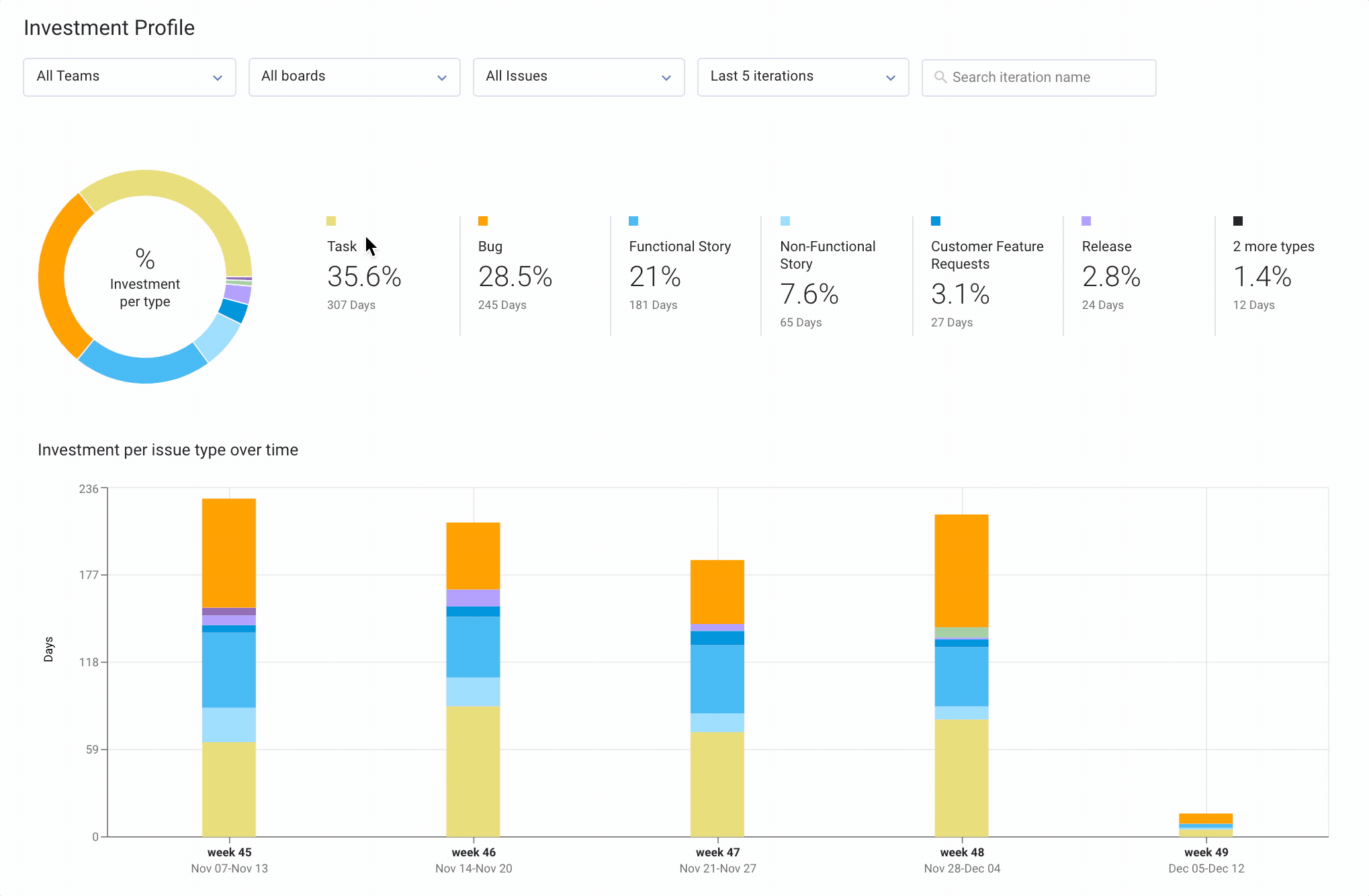
Conclusion
It’s essential to have a well-structured process for your SDLC so that you ship superb products on time. For even more tips on improving your process, check out our post on SDLC best practices. Having the right tools also helps you refine and perfect your SDLC.
With the data-driven insights you can gain from LinearB, and tools like our WorkerB automation bot, you can plan more accurately and create high-performing engineering teams that ship more features faster. To learn about all the ways LinearB can empower you and the members of your team, book a demo today.
 Want to improve your engineering processes at every level? Get started with a LinearB free-forever account today!
Want to improve your engineering processes at every level? Get started with a LinearB free-forever account today!



